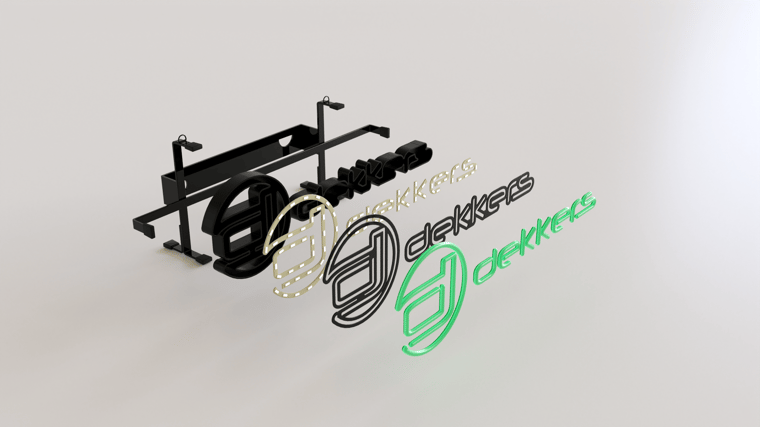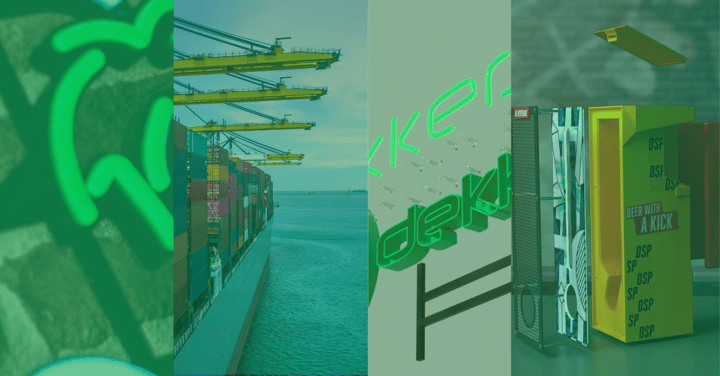If you haven’t heard the term yet but are working with marketing products or POS materials, you’ll definitely hear about it soon. Modular design has been gaining more and more importance in the last few years and is key to making products more sustainable and contributing to the circular economy.
These days, marketers, merchandisers and brand builders alike prioritise sustainability when deciding about new promotions or brand activations. Modular design serves as an opportunity that benefits the planet but also decreases transportation and maintenance costs. In this blog we'll go through all the benefits for your brand.
Don't have time to read the full overview? Listen to the short audio snippet from one of the designers at Dekkers in our new Bite-Sized Knowledge audio series.
Intro audio: Hi, and welcome to the Bite-Sized Knowledge audio edition from the Dekkers team. Today, we’ll be discussing modular design. And joining me is Mohammed Yilmaz, designer and R&D expert at Dekkers. He'll answer 5 top questions about modular design and what it can do for your brand.
What is Modular Design?
Modular design is basically an approach that divides a whole product into separable parts. These independent parts can then be easily disassembled, adapted, repaired, reused or recycled. Modular product design focuses on creating products that are built up of components or groupings of subcomponents instead of creating a solid whole.
.png?width=1920&name=MicrosoftTeams-image%20(45).png) The Can Tower in Modular Design Form
The Can Tower in Modular Design Form
The reason modular design has been gaining so much attention in the past years is its role in sustainable design and product circularity (more on that later). By creating products such as brand signage, LEDNeon signs or marketing products from components you inevitably save time and resources it takes to adapt the product, ship the product or recycle the product.
Modular Design & Circularity
The whole circular economy is built on the idea that we should think more as nature is made. This is because nature has closed loop (eco) systems that feed into each other, which limits the need for continuous new external resources to keep the system going.
The creation of new products (in general) has been very dependent on extracting continuously new resources from Earth. However, up until one-two decade ago, there was very little thought to these resources' limitations to create new products constantly.

However, these raw materials are limited, so continuing this way is unsustainable and unrealistic. The circular economy builds the bridge between the end-of-life of a product and creating a new product.
So, instead of extracting more and more of the finite sources (raw materials) from Earth to create more, the basic concept of circularity is closing the loop. Instead of having products that get stacked up in landfills, you design them in a way that we can repurpose them. This is the most critical benefit of modular products and why modular design is so important.
You can find a great visual explanation of this below: https://buildingcircularity.org/
Other benefits of products designed for modularity
- 1. For product innovation: flexibility
Product design modularity is also beneficial in the actual design and development process when creating new products. If needs change along the way or improvements come after launching a product in the market, there is much more flexibility in adapting the product.
A product designed for modularity gives more flexibility to adapt to changing branding or marketing needs. Depending on the adaptation needed, there are also cost savings possible. It will be less costly to replace a component than to replace the whole product. In fast-moving, competitive markets, having this flexibility can be key for the success of trade marketing plans or a product launch.
- 2. For maintenance: easy repair
Modular designed products have easily removable and replaceable components. This gives two significant advantages for customers or consumers. On the one hand, maintenance becomes more manageable and less costly.
On the other hand, replacing even the main components instead of the whole product itself allows for repair or replacement while avoiding excessive production. This is in line with the recent Right2Repair Movement which many organizations are starting to follow.
Whether it is B2B (a client or customer) or B2C (the consumer itself) being able to easily maintain products and prolong their lives is crucial to reduce overall waste and reliance on freshly extracted raw materials.
- 3. For lower costs: faster production and compact delivery
Does a product designed for modularity cost more or less? The answer to this question will depend on multiple factors (design, scope, brand needs, regulations, quality etc.). In general, designing for modularity involves initially more investment that contributes to cost-savings across (re)production, delivery, maintenance and repair.
To name a couple of areas where you can see costs drop:
- Lowered manufacturing time: the initial moulding costs can be higher in modular design due to the separate components. However, it is much faster and easier to manufacture components once production starts. Speedier production means fewer costs. This is predominantly beneficial for larger or repeat orders.
- Less transportation volume: thanks to the smaller components, you can lower the transport volume by packing the product more tightly and compact into a smaller size. Less transportation volume is not only beneficial for your budget but also decreases emissions.
- Easy maintenance and repair: when a part of the product defaults or wears out, this part is easier and less costly to repair or replace than the entire product. Additionally, you increase the product life and contribute to fewer emissions by replacing parts instead of the whole product.
Check out some of the products designed for modular by Dekkers, here:
Want to know more about what modular design can do for your brand? Get in touch!





